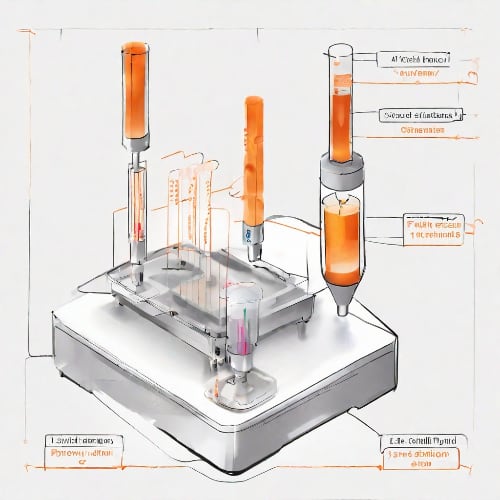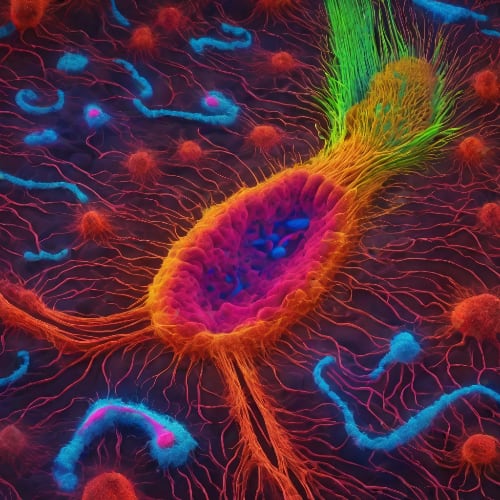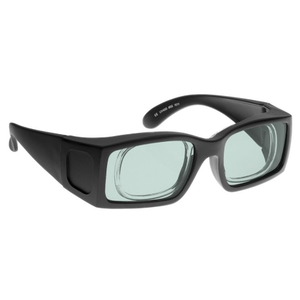Multi-Wavelength Laser
Item Code: 40A-48A-56B-64A-21-NT-NFDescription
- Four wavelengths
- Plug-and-play
- Single user interface for all 4 wavelengths
- Space-saving design
- No optics realignment
- Remote PC control
Laser Rental
Rent a high-performance laser for a time-limited experiment. Or try several laser options before deciding, which to choose.
Success
Your request has been sent successfully. We'll get back to you as soon as possible.
Back to homepageRequest
Begin your product purchase process, with flexibility for customization based on your needs.
Success
Your request has been sent successfully. We'll get back to you as soon as possible.
Back to homepage| Parameter | Minimum Value | Typical Value | Maximum Value |
|---|---|---|---|
| Output power, mW 1 | - | 405 nm - 120 488 nm - 40 561 nm - 50 638 nm - 130 |
- |
| Wavelength tolerance, nm | 400 480 560.9 635 |
405 488 561 638 |
410 495 561.1 641 |
| Longitudinal modes | - | Multiple | - |
| Spectral line width FWHM, nm | - | 405 nm - 1 488 nm - 1 561 nm - 0.1 638 nm - 1 |
2 2 0.3 2 |
| Power stability, % (RMS, 8 hrs) 2 | - | 0.2 | 1 |
| Intensity noise, % (RMS, 20 Hz to 20 MHz) 3 | - | 0.5 | 1 |
| Transversal modes | - | TEM00 | - |
| Polarization direction | - | Vertical | - |
| Polarization contrast | 50 50 100 10 |
405 nm - 300 488 nm - 400 561 nm - 500 638 nm - 100 |
- |
| Beam width (1/e2), mm | - | 405 nm - 0.9 488 nm - 0.8 561 nm - 1 638 nm - 1 |
1.4 1.1 1.6 1.3 |
| Beam height (1/e2), mm | - | 405 nm - 1.3 488 nm - 1.3 561 nm - 0.8 638 nm - 1.2 |
1.7 1.7 1.4 1.6 |
| Beam position overlap, mm 4 | - | - | 1 |
| Horizontal beam divergence, mrad | - | 405 nm - 0.9 488 nm - 1.1 561 nm - 1.1 638 nm - 1.2 |
1.5 1.5 1.6 1.4 |
| Vertical beam divergence, mrad | - | 405 nm - 0.5 488 nm - 0.4 532 nm - 1.1 638 nm - 0.6 |
1 1.2 1.5 1 |
| M² effective | - | 405 nm - 1.3 488 nm - 1.3 561 nm - 1.2 638 nm - 1.3 |
1.5 1.5 1.5 1.4 |
| Control interface type 5 | - | UART/USB | - |
| Operation mode | - | ACC (diode lines) APC (DPSS 561) | - |
| Power stability, % (peak-to-peak, 8 hrs) | - | 1 | 3 |
| Input voltage, VDC | 9 | 12 | 13 |
| External power supply requirement 6 | - | +12 V DC, 2 A | +12 V DC, 3 A |
| Dimensions (WxDxH), mm 7 | - | 121.1 × 68 × 36 | - |
| Beam height from the base, mm | - | 23 | - |
| Heat-sinking requirement, °C/W | - | <0.5 | - |
| Optimum heatsink temperature, °C | - | 25 | - |
| Warm up time, mins (cold start) | - | < 1 | 2 |
| Temperature stabilization | - | Internal TEC | - |
| Overheat protection | - | Yes | - |
| Storage temperature, °C (non-condensing) | - | - | - |
| Net weight, kg | - | 0.5 | - |
| Power consumption, W 8 | - | 2 | 18 |
| Warranty, months (op. hrs) 9 | - | 14 (10000) | - |
| RoHS | - | Yes | - |
| CE compliance | - | - General Product Safety Directive (GPSD) 2001/95/EC - (EMC) Directive 2004/108/EC | - |
| OEM lasers are not compliant with | - | IEC60825-1:2014 (compliant using additional accessories) | - |
1 The optical power can be tuned from virtually 0% to 100% by changing the driving current of the laser diodes. However, other specifications, such as central wavelength, power stability, noise, polarization ratio, beam shape, quality, and circularity are not guaranteed at power levels other than factory preset power. Significantly worse power stability is to be expected at very low power levels, e.g. <3% from specified nominal power.
2 The long term power test is carried out at constant laser body temperature (+/-0.1 °C) using an optical power meter with an input bandwidth of 10 Hz. The actual measurement rate has a period of about 20 seconds to 1 minute.
3 The noise level is measured with a fast photodiode connected to an oscilloscope. The overall system bandwidth is from 2 kHz to 20 MHz. Noise level for DPSS line (561 nm) can be up to 40 %
4 Measured at 1 m from output aperture between the centers of two most distant beams.
5 UART communication can be connected directly to a pin-header connection at the back of the unit. USB-computer communication is provided directly via inbuilt USB-micro socket.
6 If the break-out-box AM-C9 is used, a PD (Power Delivery) type of power supply can be used.
7 Excluding control interface pins and an output window/fiber assembly.
8 For single enabled wavelength.
9 Whichever occurs first.
Typical Near Field
Typical near field (0.45 m from output aperture) beam profile of 40A-48A-56B-64A-21 combiner.

Typical Far Field
Typical far field (1 m from output aperture) beam profile of 40A-48A-56B-64A-21 combiner.


Flow Cytometry
Flow cytometry is a sophisticated analytical technique widely used in biomedical research and clinical diagnostics. It allows for the simultaneous analysis of multiple physical and chemical characteristics of cells or particles as they flow through a laser beam. By utilizing fluorescence and light-scattering principles, flow cytometry provides valuable insights into cell populations, allowing researchers to study cell morphology, identify cell types, and assess various cellular functions with high-throughput precision.









